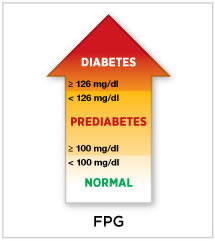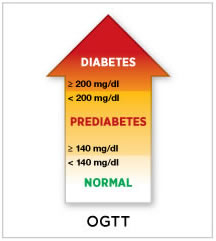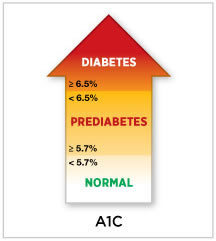Diabetes Prevention
“HEALTH is not valued till sickness comes, that’s why an ounce of prevention is worth a pound of cure.” We are there to empower the patient to determine and develop the inherent capacity to be responsible for their own life.
Prevention of Type 2 Diabetes for the patient is creating total awareness of the causes and applying them in a one to one case, picking up the lifestyle change the individual needs from the factors viz. unrestricted diet, lack of activity, sleep, stress, smoking and alcohol. We guide you to some basic steps which really help to make a difference if they become a regular habit



FPG – Fasting Plasma Glucose (Fasting Blood glucose)
OGGT – Oral Glucose Tolerance Test
HbA1C/ A1C – Glycosylated Haemoglobin
Prediabetes is the precursor stage before diabetes mellitus in which not all of the symptoms required to diagnose diabetes are present, but blood sugar is abnormally high.
Prediabetes should not be viewed as a clinical entity in its own right but rather as an increased risk for diabetes and cardiovascular disease (CVD). Prediabetes is associated with obesity (especially abdominal or visceral obesity), dyslipidaemia with high triglycerides and/ or low HDL cholesterol, and hypertension (ADA, 2017).
Most of the pre-diabetes shows no symptoms, only high blood sugar level.
Pre-diabetes predicts high risk for development of diabetes and high risk for atherosclerotic vascular disease.
Results indicating prediabetes are:
- An A1C of 5.7% – 6.4%
- Fasting blood glucose of 100 – 125 mg/dl
- An OGTT 2-hour blood glucose of 140 mg/dl – 199 mg/dl
Diagnosis
1. HbA1C/ A1C (Glycosylated Haemoglobin) The A1C test measures your average blood glucose for the past 2 to 3 months. The advantages of being diagnosed this way are that you don't have to fast or drink anything. Diabetes is diagnosed at an A1C of greater than or equal to 6.5%
| Result | A1C |
| Normal | less than 5.7% |
| Prediabetes | 5.7% to 6.4% |
| Diabetes | 6.5% or higher |
2. Fasting Plasma Glucose (FPG)
This test checks your fasting blood glucose levels. Fasting means after not having anything to eat or drink (except water) for at least 8 hours before the test. This test is usually done first thing in the morning, before breakfast.
Diabetes is diagnosed at fasting blood glucose of greater than or equal to 126 mg/dl
| Result | Fasting Plasma Glucose (FPG) |
| Normal | less than 100 mg/dl |
| Prediabetes | 100 mg/dl to 125 mg/dl |
| Diabetes | 126 mg/dl or higher |
3. Oral Glucose Tolerance Test (also called the OGTT)
The OGTT is a two-hour test that checks your blood glucose levels before and 2 hours after you drink a special sweet drink. It tells the doctor how your body processes glucose.
Diabetes is diagnosed at 2-hour blood glucose of greater than or equal to 200 mg/dl
| Result | Oral Glucose Tolerance Test (OGTT) |
| Normal | less than 140 mg/dl |
| Prediabetes | 140 mg/dl to 199 mg/dl |
| Diabetes | 200 mg/dl or higher |
Risk for diabetes and risk for artherosclerotic vascular disease is HIGHLY PREVENTABLE by lifestyle modifications and medication intervention.
Risk Factors
- Sleep disorders
- Family history of diabetes
- Cardiovascular disease
- Increased triglycerides levels
- Low levels of good cholesterol (HDL)
- Overweight or obesity
- Elevated blood pressure
- Elevated fasting plasma glucose
- Women who have had gestational diabetes, had high birth weight babies and/ or polycystic ovarian syndrome (PCOS)
In above all high-risk patients we have designed treatment goals for diabetes prevention
1. To achieve or maintain appropriate body mass (BMI) and waist circumference.
2. To help in modifying lifestyle by recommending exercise plan in daily routine.
3. To help maintain normal Blood sugar and Lipid profile
4. To develop a supportive relationship to facilitate behaviour change and positive dietary modifications.
